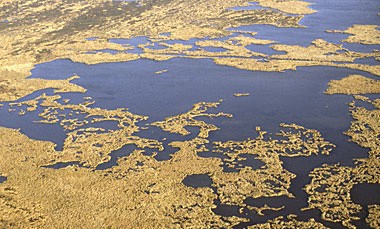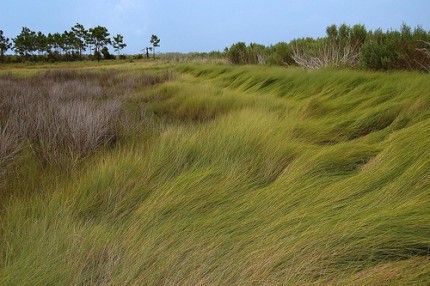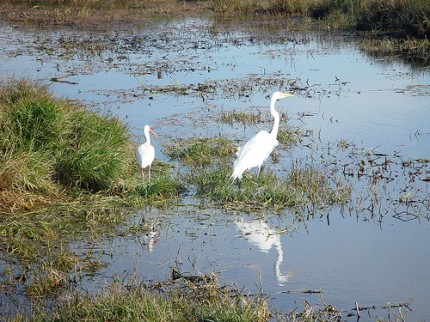Brackish Marsh. revisited
In Louisiana, brackish marshes have declined from roughly 750,000 acres (pre-settlement) to half of that amount today. This loss can be attributed to a combination of sea level rise, and manmade land disturbances, such as dredging and levee and canal building, which have resulted in a loss of sediment deposition and increased soil erosion. However, the saltwater intrusion has converted some freshwater marsh into brackish marshes, so that the amount brackish wetlands have been relatively stable recently.
Species Composition
Brackish Marsh is typically dominated by Spartina patens (Salt Meadow Hay Hay Cordgrass) as it is able to tolerate high salt environments. However unlike pure salt marshes, other plant species are also able populate the ecological system. Bulrush, Salt Marsh Bulrush, Smooth Cordgrass, and Salt Grass among others species, occur semi-frequently.
Why Care?
Brackish Marshes are important ecosystems because they provide habitat for various animals including shorebirds, terns, waterfowl, brown pelicans and bald eagles. These marshes also provide critical habitat for various juvenile fish, shrimp, and crab species, as well as alligators and turtles. In addition brackish marshes provide protection to human settlements, by acting as a natural barrier and speed bump to the storm surges and flooding cause by coastal storms.



